
|
||||||||||||||||||||||||||||||||||||||||||||||||||||||||||||||||||||||
Carrière opérationnelle du Mirage III C dan l AAF
Le 1er des 100 exemplaires commandés par l'Armée de l'Air ayant En fait seuls les 95 premiers ont été effectivement livrés; les 5 suivants ayant été modifiés en Mirage III R, III E et III O. Il sera présent de 27 ans et 1 mois au sein de l AAF La carrière opérationnelle du Mirage III C a commencé en juillet 1961 et ils équipèrent la 2° ESCADRE DE CHASSE DE Dijon , la 5°Escadre de Orange la 10 ° escadre de Creil et la 13° Escadre de Colmar et au CEAM Il a été retiré du service le 12 août 1988 à Djibouti avec l'escadron de Chasse 3/10 "Vexin" Par contre un Mirage III C volera au sein du CEAM de Mont-de-Marsan et au CEV o jusqu’en 1991.Il sera aussi l’un des héros du feuilleton les Chevaliers du Ciel Le Mirage III C à l’export 89 avions ont été vendus à l export : Israël 72 Mirage III CJ pour Israël, qui furent baptisés Shachak ou Coup de foudre. Ils connurent le baptême de feu lors de la guerre des 6 jours en juin 1967 Ils sont crédités de 50 avions abattus Afrique du Sud . 6 Mirage III CZ Suisse 1 Mirage III CS. Argentine. 19 Mirage III CJ remotorisés par des turboréacteurs Atar 9C furent vendus par Israël en décembre 1982
Caractéristiques Equipage 1 Masse 11.800 kgs Masse à Vide 5.922 kgs Longueur14.78m Envergure 8.22m
Hauteur 4.5 m Surface alaire 34.85 m2 Plafond 18 kms Motorisation SNECMA Atar 09B Vitesse max mach 2.15
Vitesse 83.2 m/seconde Auronomie 2400 kms Armement de base 2 canons DEFA 30 mm approvisionnés à 125 obus chacun Missiles missiles AIM 9 Sidewinder ou Matra Magic R 550 5 Crochets d emport de bombes 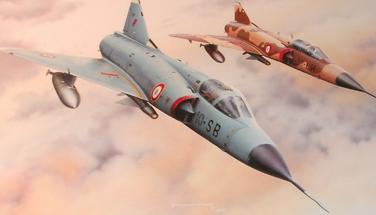 autre photoscope ICI The MIRAGE III C
 The Mirage III was widely exported throughout the world and declined in multiple versions
It has been used repeatedly in combat. Currently it is withdrawn from active service and you could find now in museums But as the early success of this aircraft began in the discretion History With the Mirage III, Dassault built the french hunter most famous of the late twentieth century and this aircraft will be for a long time one of the jewels of the French aerospace industry in terms of combat aircraft. We have to go back to 1951 to see the beginnings of Mirage III In fact at that time the DASSAULT desing department work upon an interceptor with a delta wing. The conflict in Korea, provides lessons and the French Air Force (AAF) issue in 1953, a detailed programme for a small and lightweight fighter capable of delivering weapons all time at an altitude of 18000 m in less than 6 minutes. The prototypes to study whether the Mirage I (2 reactors MD30R of 1000 kg thrust with PC) or Delta jet MD.550 mystery with its two reactors Armstrong-Siddeley Viper of 795 kg and rocket engine largable SEPR.66 of 1500 kg does not fit in with this detailed programme also DASSAULT reaches the conclusion that only a plane with an engine turbojet engine and liquid fuel rocket with a wing canard was the solution. The studies are launched. This aircraft will be powered by the engine SNECMA Atar 9 of 4500 kg thrust with PC The fuselage is the subject of extensive research Yet plane is too small and can not be an operational aircraft. Studies are made for a jet aircraft equipped with 2 Turboméca Gabizo of 1090 kgp and 2 booster rocket of 750 kgp. but this plane should have been the Mirage II does not promise particularly in terms of speed, so it was not built Arrive then the Mirage III equipped with a SNECMA Atar reactor This aircraft, Mirage III 001, makes its maiden flight on November 17, 1956 with Roland Glavany the commands and reached Mach 1.24 in the 4th flight on December 3. The aircraft can not, however, to reach Mach 2 (Mach 1.89 with rocket booster on October 2, 1957, during the 84éme flight). This is notably through the adoption of central mobile and conical stone inlets or “mouse” that Roland Glavany reached Mach 2, for the 1st time in Western Europe, with the Mirage III A01, October 24, 1958. The line of Mirage was born and many versions will appear .Originally designed as interceptor will become over the years a formidable fighting platform The Mirage III C (C for Chasse and Cyrano, the radar) is part of this lineage 189 copies of series of Mirage III C were produced, including 95 for the AAF, Final assembly is provided at the Mérignac plant. Near Bordeaux The Mirage III C The Mirage III C is the version interception high and very high altitude; It is derived directly from the Mirage III and he did not object to the construction of a prototype, he will fly for the first time on October 9, 1960 in Mérignac in the hands of Jean Coureau. It is an aircraft built entirely with a metal fuselage responding to the law of areas and includes 7 subsets It has an ejection seat which takes place in a habitable simple and functional. Orders for the aircraft for the time were revolutionary (navigation system by punch cards Doppler equipment Marconi providing the speed and drift to a calculator For the engine is equipped with a reactor SNECMA Atar 09B (from a German reactor of WW2 ) 6000kgs thrust with post combustion can also receive a rocket engine SEPR 841 under the rear fuselage giving 80 seconds during 1500 kg thrust additional He received a tip before the radar Thomson CSF Cyrano Ia .But it does not have the possibility of detection down. It will then be improved. It is coupled with a viewfinder CSF97 Wing despite its finesse could receive the landing gear fitted with a brake disc. The brakes housed in the wings but also a parachute housed in the tail of the aircraft provides the slowdown in the aircraft during taxi Armament consists of 2 DEFA 30 mm guns supplied to 125 shells each. He also attaches 5 points for bombs. It can draw AIM 9 Sidewinder missiles or R Matra Magic 550 The arms are changing depending on the version and the owner
Career operational Mirage III C in AAF The 1st of the 100 copies ordered by the Air Force had in fact only the first 95 were actually delivered, and 5 have been modified following a Mirage III R, E III and III O. he fly for27 years and 1 month within the AAF The career operational Mirage III C began in July 1961 in the 2 ° ESCADRE CHASSE de Dijon, 5 ° ESCADRE CHASSE of Orange the 10 ° ESCADRE CHASSE of Creil and 13 ° ESCADRE CHASSE of Colmar and CEAM It was withdrawn from service on August 12, 1988 in Djibouti with the squad Chasse 3 / 10 "Vexin" By against a Mirage III C fly within the CEAM of Mont-de-Marsan and the CEV (Centre d’essai en Vol) until 1991. It is also one of the heroes of the drama “Chevaliers du Ciel” The Mirage III C for export 89 planes were sold to export: Israel 72 Mirage III CJ for Israel, who were baptized or Shachak Love at first sight. They knew the baptism of fire during the war of 6 days in June 1967 They are credited with 50 planes shot down South Africa. 6 Mirage III CZ Switzerland 1 Mirage III CS. Argentina. 19 Mirage III re CJ by turbojet Atar 9C were sold by Israel in December 1982
Spécifications Crew 1 Max takeoff weigth 11.800 kgs Empty Weigth 5.922 kgs Lenght14.78m Wing spam 8.22m Heigth 4.5 m Wing aerea 34.85m2 Service Ceiling 18 kms Powerplant SNECMA Atar 09B maximum Speed mach 2.15 Range 2400 kms Rate of clim 83.2m/second Armament base 2 canons DEFA 30 mm approvisionnés à 125 obus chacun Missiles AIM 9 Sidewinder ou Matra Magic R 550 4 underwing pylons 1 centraal pylon for bombs or tanks  Other Walk Around HERE
|
|
Droit d’auteur La plupart des photographies publiées sur ce site sont la propriété exclusive de © Claude Balmefrezol Elles peuvent être reproduites pour une utilisation personnelle, mais l’autorisation préalable de leur auteur est nécessaire pour être exploitées dans un autre cadre (site web publications etc) Les sources des autres documents et illustrations sont mentionnées quand elles sont connues. Si une de ces pièces est protégée et que sa présence dans ces pages pose problème, elle sera retirée sur simple demande. Principaux Collaborateurs:
Nb
de visiteurs:7890879 Nb
de visiteurs aujourd'hui:367 Nb
de connectés:61 | ||||||||||||||||||||||||||||||||||||||||||||||||||||||||||||||||||||





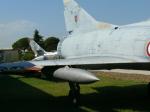
_resultat.jpg)
_resultat.jpg)
_resultat.jpg)
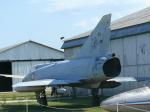
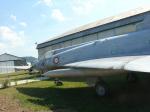
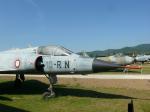
_resultat.jpg)
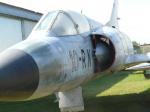
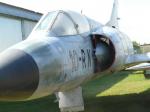
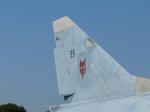
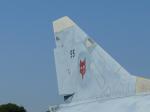
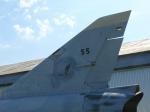
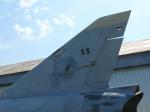
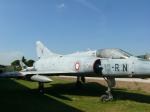
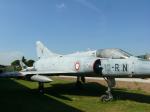
_resultat.jpg)
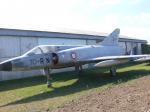
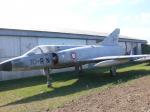
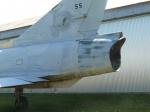
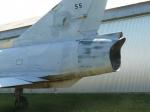







.jpg)
.jpg)
.jpg)
.jpg)
.gif)